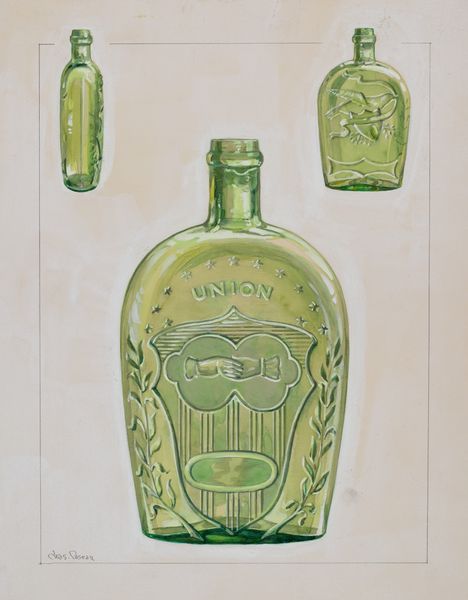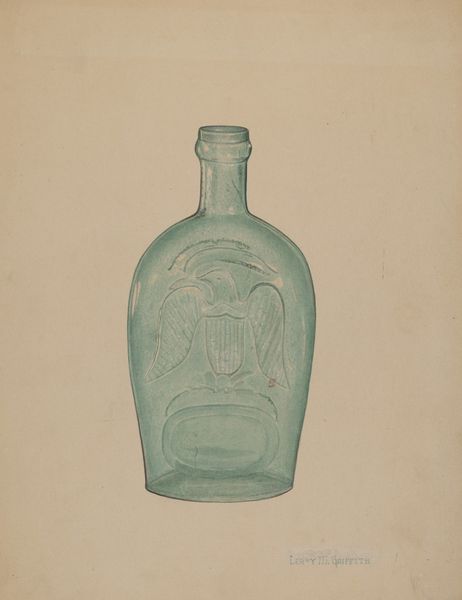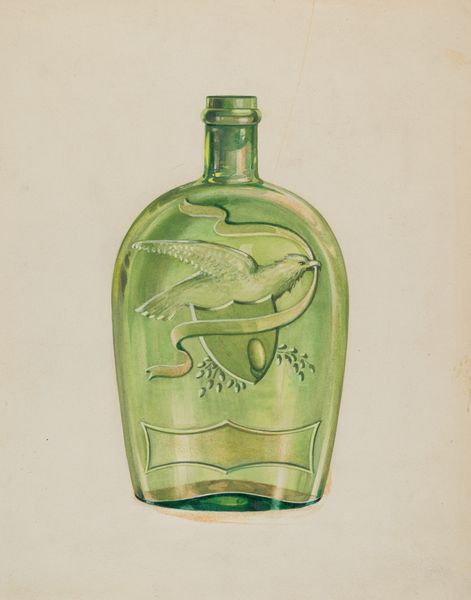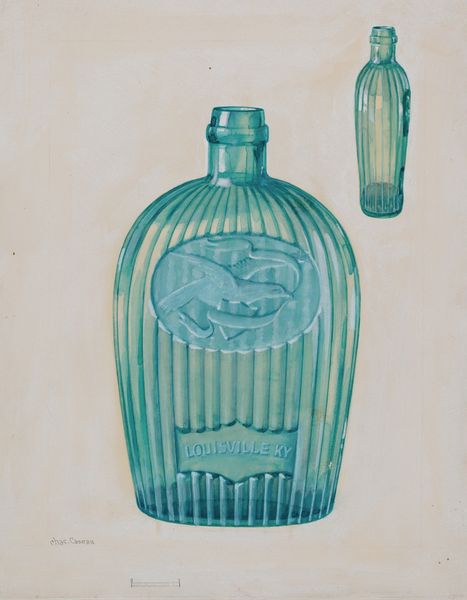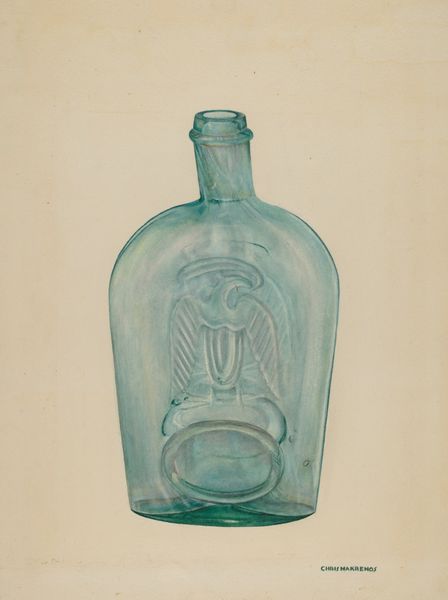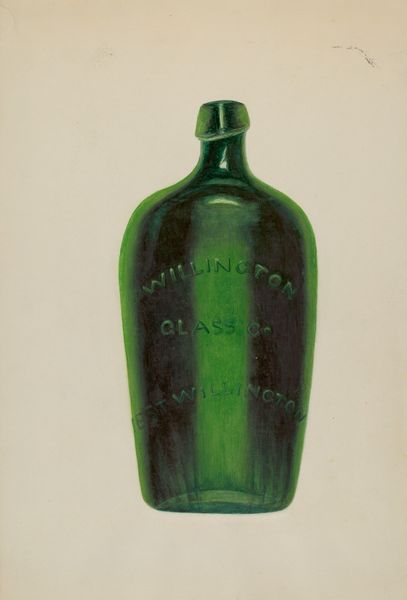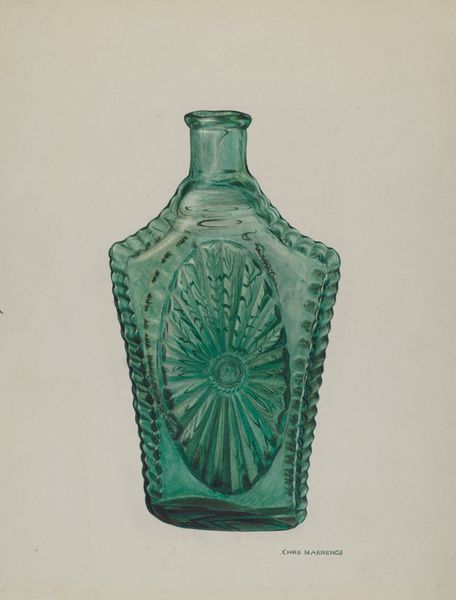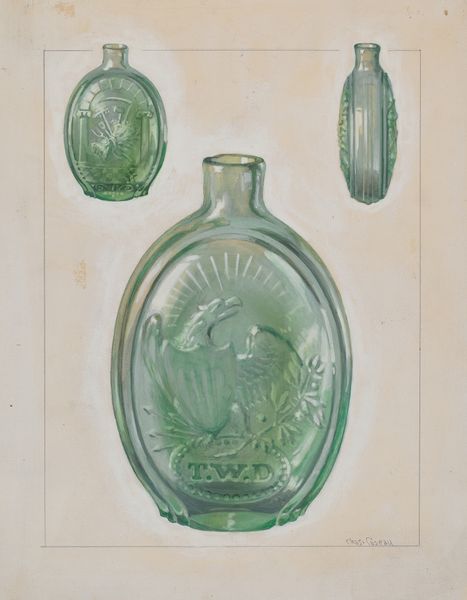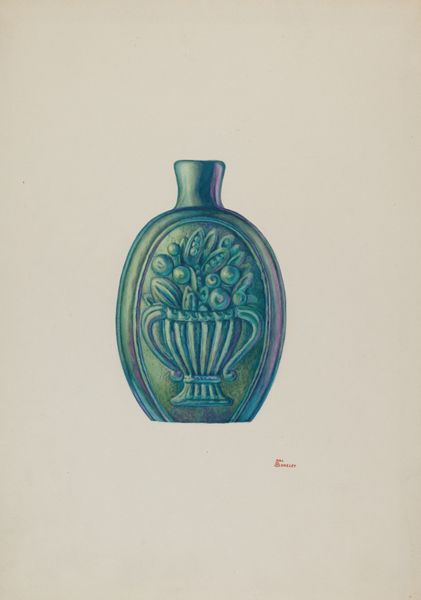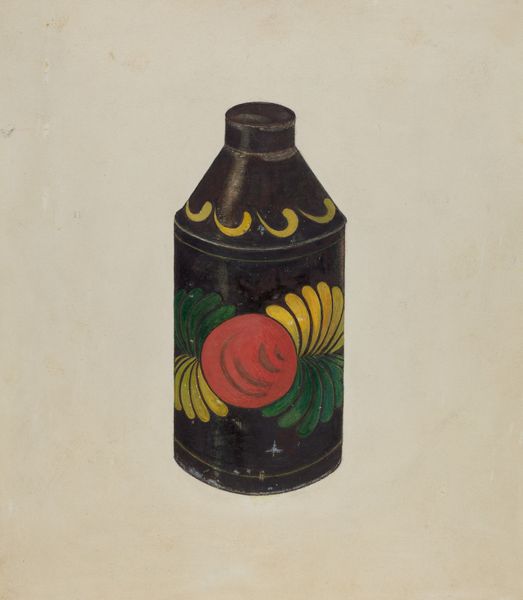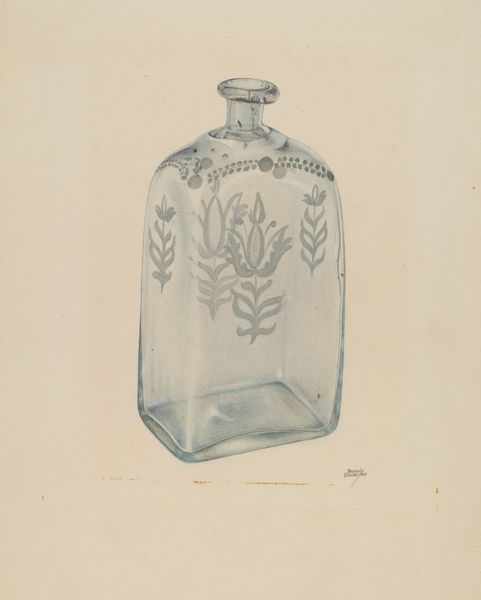
drawing, paper, watercolor
#
drawing
#
paper
#
oil painting
#
watercolor
#
pencil drawing
#
coloured pencil
#
watercolour illustration
#
watercolor
Dimensions: overall: 29.3 x 23.3 cm (11 9/16 x 9 3/16 in.)
Copyright: National Gallery of Art: CC0 1.0
Editor: Here we have Charles Caseau's "Liquor Flask," a watercolor and pencil drawing on paper, dating from between 1935 and 1942. It's so delicately rendered, almost ethereal. What strikes you most about this work? Curator: Immediately, I'm drawn to the symbolism of the handshake emblazoned on the flask. Consider its context, painted during the interwar period. This wasn't just a depiction of a liquor container; it resonated with the anxieties and aspirations of a nation grappling with economic hardship and social change. What kind of "union" do you think the artist is trying to promote? Editor: Hmm, with "Union" so prominently displayed, maybe it speaks to solidarity during the Great Depression? The green color palette could symbolize hope, perhaps? Curator: Precisely. The color symbolism is potent. But let's delve deeper into the implications of alcohol. It served as both a temporary escape from reality and a commodity fraught with moral and political debates during the Prohibition era and its aftermath. Does the idea of presenting it this way change your perspective? Editor: It does! The work feels like it's suggesting how notions of community and despair can converge, becoming deeply intertwined, as if offering a shared experience through this very fraught, ambiguous symbol. Curator: And it highlights the subtle ways everyday objects become carriers of social and political meaning. By meticulously rendering something as commonplace as a liquor flask, Caseau compels us to consider how material culture is interwoven with collective experience and identity. How does that influence your thinking now? Editor: I see it not as a straightforward celebration or condemnation, but as a complex reflection on American society at the time. I initially missed the potential historical references! Curator: Exactly! That is the key to remember when we are studying artworks; they speak to the social and historical environments in which they were created. Editor: That gives me a new appreciation for looking beyond just the surface aesthetics of a work!
Comments
No comments
Be the first to comment and join the conversation on the ultimate creative platform.
